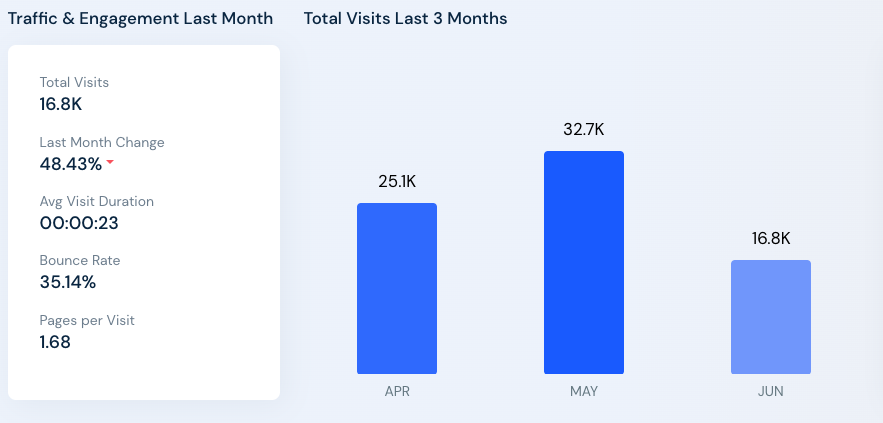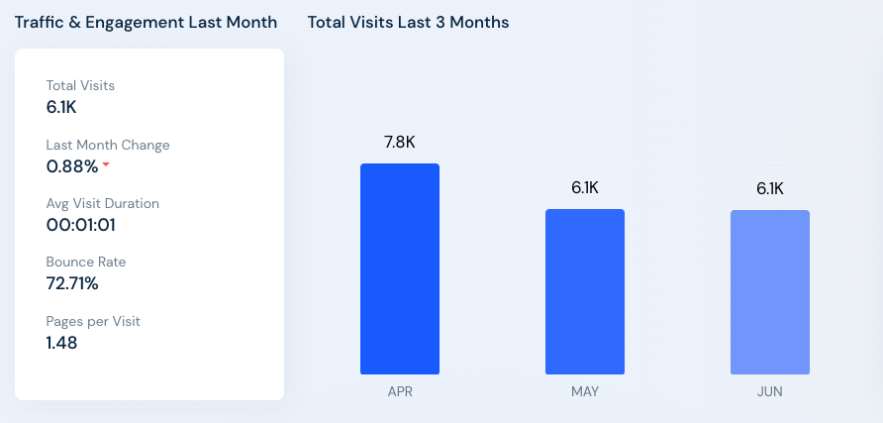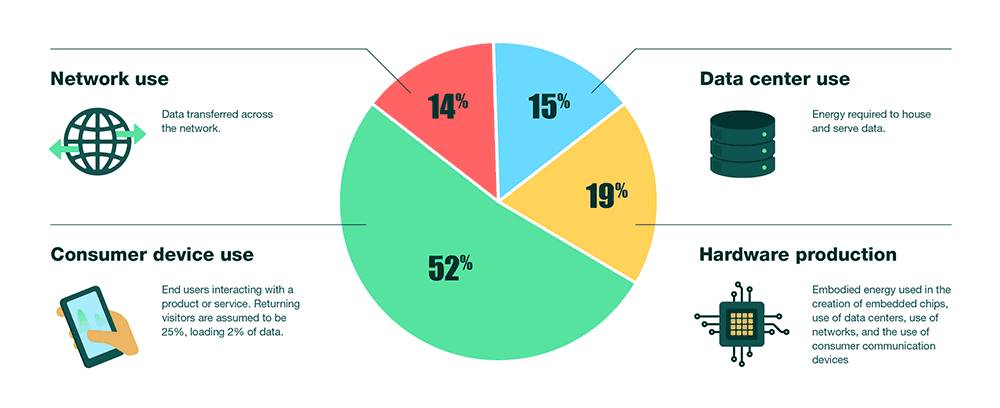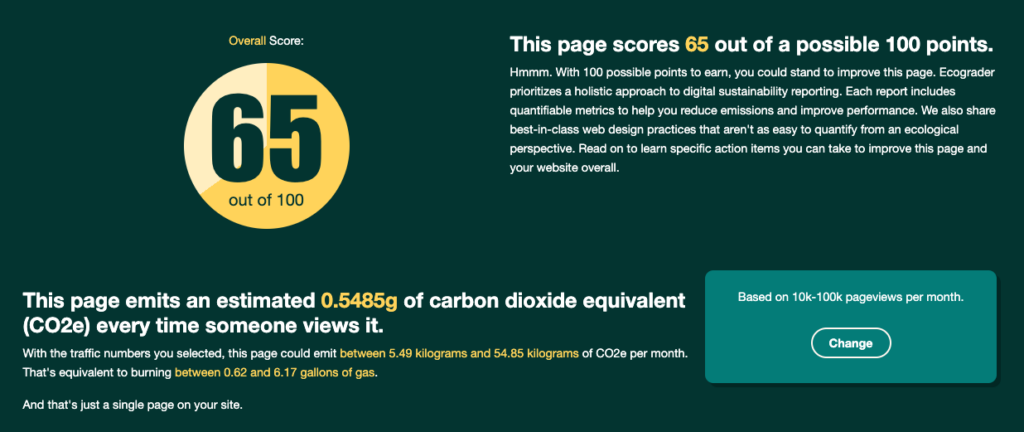How to Estimate Website Traffic

There are several times when you might need to estimate website traffic. In this post, we explore a few of them.
For example:
- You might want to know how much traffic a new website might generate before you build it.
- Or perhaps you’re calculating digital emissions and need to know some general site traffic numbers.
- Or maybe you’re running a digital marketing campaign and want to set some realistic goals based on existing traffic numbers.
Here are a few simple ways to estimate website traffic.
Use Similar Site Data to Estimate Website Traffic
We recently got this question from a client in the nonprofit sector who was applying for a grant to build a website. The grant asked them, essentially: if you got this grant to build this website, what do you estimate website traffic would be?
It sounds like an absurd question, right? How would I know what traffic to this potential website would be if I haven’t built it yet? And shouldn’t I be more focused on generating quality leads rather than simply inbound traffic?
In order to estimate the potential traffic for a website you’re building, take a look at similar websites and use that traffic as a starting point. To do this, make a short list of similar websites and run their stats through SimilarWeb.com, a free tool that allows you to analyze web traffic to any website with a decent volume of visitors.
Let’s say you were a nonprofit bicycle transportation advocacy group in Illinois applying for a grant to build a website with trip planning information for recreational and commuter cyclists. To estimate potential traffic, you might take a look at traffic to a similar bicycle advocacy website. This is what you would see:

That’s some great info! But it’s best to take a look at at least three similar websites with varying degrees of traffic. Compare new websites with ones that are more established, or websites with a big social media presence to ones that do little marketing.
Here’s an example from a similar transit advocacy organization’s website with less of a marketing presence:

As you can see, traffic is much lower.
After running reports on several comparable websites, use the stats to make an educated guess about your own potential website traffic depending on where your project falls on the spectrum.
Of course, website traffic depends on many things: SEO efforts, PR and promotional campaigns, pay-per-click (PPC) ads, email marketing, how often you publish new content, inbound links from reputable sources, and so on. Estimating traffic with pinpoint accuracy will depend on a much larger digital strategy discussion.
However, if a project you’re working on somehow depends on estimating website traffic, as in the case noted above, this exercise can help you quickly come up with some reasonably accurate figures.
Using Estimated Website Traffic to Calculate Digital Emissions
Many organizations we work with prioritize sustainable web design when building or redesigning their websites. It may even be a consideration when applying for a grant to develop your website. Calculating estimated digital emissions can provide a baseline for you to incorporate into an overall emissions reduction strategy.
Web traffic is just one piece of the digital emissions puzzle, but it is an important step in figuring out your company’s carbon footprint and how to reduce it.

Mightybytes recently updated our free digital sustainability tool Ecograder to include carbon estimation and provide useful, actionable reporting. If you need to estimate digital emissions, Ecograder’s reporting will be more accurate if you have estimated monthly web traffic on hand. Like our previous example, you can follow the same process with SimilarWeb to estimate similar websites’ traffic. Then simply type in the URL at Ecograder.com to see the score and report.

Digital emissions calculation formulas are also available at sustainablewebdesign.org. It will be helpful to know new visitors vs. returning visitors because, due to caching, returning visitors use less data than new visitors.
For established websites, resources like Google Analytics, Screaming Frog, and Semrush offer traffic analytics but require an account. Using your web traffic, you can calculate energy consumption per visit with the following:
Energy per visit in kWh (E):
E = [Data Transfer per Visit (new visitors) in GB x 0.81 kWh/GB x 0.75] + [Data Transfer per Visit (returning visitors) in GB x 0.81 kWh/GB x 0.25 x 0.02]
If you or your organization are interested in learning more about your site’s environmental impact, contact us to discuss a full site carbon audit and report. We also offer full web development services with a focus on sustainability and accessibility.
Digital Carbon Ratings, now in Ecograder.
Understand how your website stacks up against industry carbon averages with this new feature.
Try Ecograder


